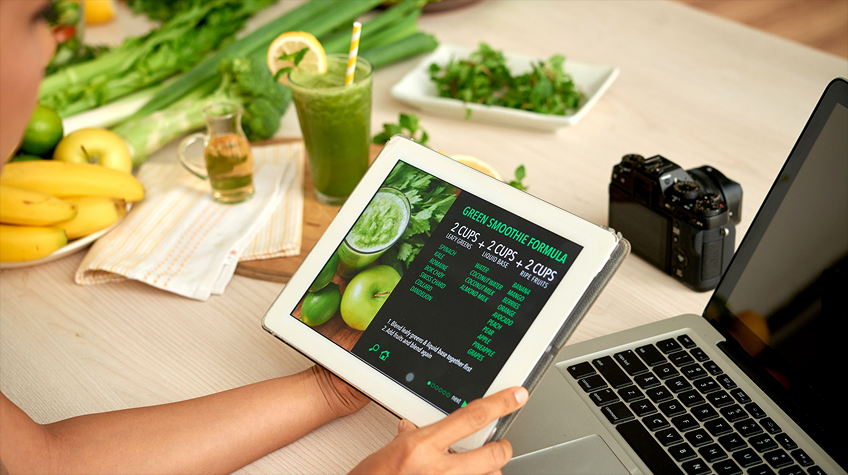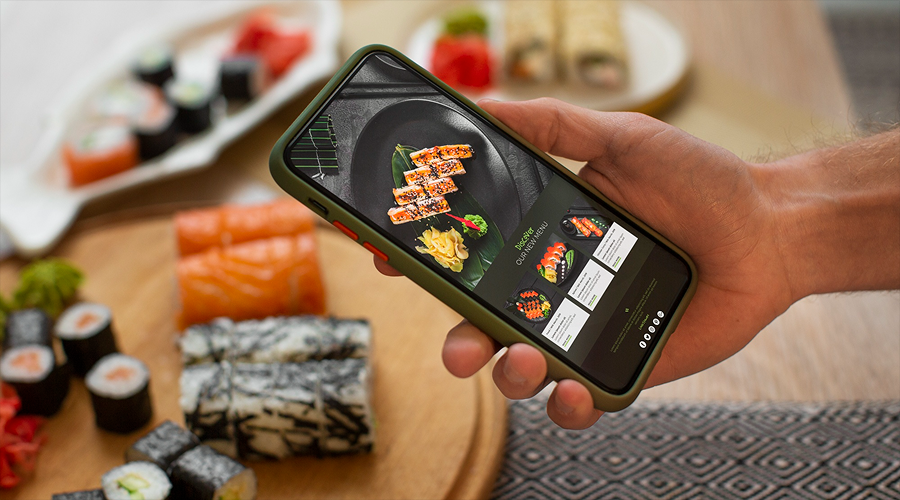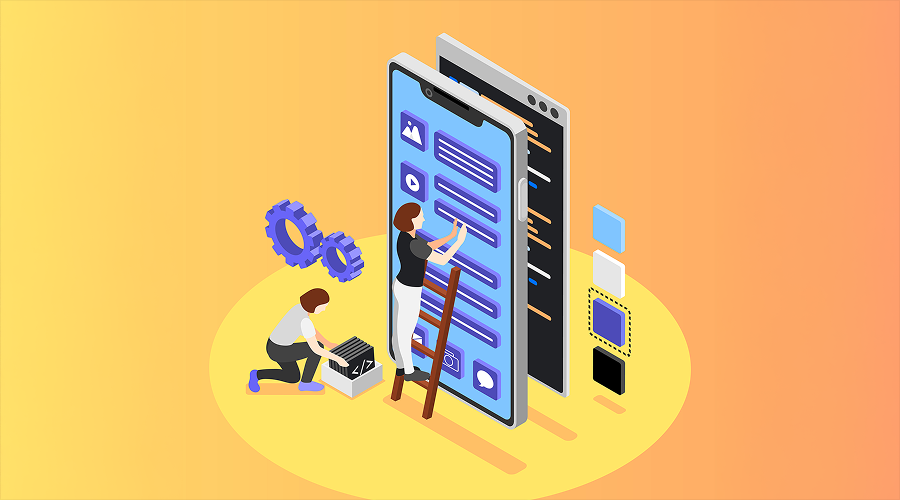
Wishing to manage your restaurant smoothly and grow faster? Learn the steps involved in crafting the best online restaurant management application. Everything you need to know about benefits, development stages, and essential points is explained in this guide.
Operating a restaurant is not easy because handling orders, managing stock, tracking staff performance, and evaluating customer satisfaction requires a lot of work. That is why online restaurant management applications are useful. It makes everyday activities easier, minimizes errors made by staff and puts more power into the hands of restaurant owners.
A well-developed application can make service better, help save time and resources, cut waste, and boost revenues. It doesn’t matter whether you run a little cafe or a big restaurant chain; moving your business online is a wise decision.
In this blog, gain insight into the benefits of using a restaurant management application, learn how you can build one, and important tips you should consider during development. Continue reading.
Online Restaurant Management Application: Key Advantages

1. Centralized Operations
A restaurant management app allows you to handle the menu, book tables, complete orders, generate bills, and monitor inventory all at once. Rather than setting up different tools, staff can use everything from one source. It helps the kitchen staff, wait staff, and managers talk more effectively, so there is less confusion and everything gets done more efficiently.
2. Real-Time Order Tracking
Open orders received via tables or online sites are displayed in the kitchen dashboard right away. When the device syncs in real time, staff in the kitchen can focus, start prepping earlier, and ensure better service. Managers can follow all orders and take action if there is a problem.
3. Inventory Management
When you count the products by hand, you may sometimes end up with too much food or not enough. As you use products, the app updates the stock information in real time. The insights from mining data can help restaurants foresee their needs by monitoring customer behavior, thus cutting both waste and optimization costs.
4. Customer Relationship Management (CRM)
Regular customers usually come from happy customers. By using CRM Software, restaurants can keep track of birthdays, likes and dislikes, allergies, and what’s been previously ordered. Based on a customer’s past orders, they can offer rewards and help keep them loyal. As a result, customers feel more positive and return to your business again.
5. Analytics and Reports
Numbers reveal what happened in the past. An intelligent app helps you to see the trend in sales, identify peak meal times, learn about popular dishes, and read customer comments. As a result, you can choose to add new menu alternatives, revise prices, or get additional help as customer flow increases.
6. Employee Management
It is very frustrating to look after shifts, leave records, and payroll manually. The app sets schedules, reminds employees about when they work, and records the number of hours they put in. The system even gives recognition to the top performers in a company.
7. Multi-platform Access
Whether you are at home or on vacation, you can review reports, respond to crises, or keep track of performance using your mobile, tablet, or laptop. This kind of access helps you keep better control over your business.
Steps to Develop the Best Online Restaurant Management Application

1. Understand the Restaurant’s Needs
You need to figure out who your app is designed for before you start to build it. A fine dining restaurant might require features such as table-side ordering and reservation tracking, but a quick-service restaurant might emphasize speed and delivery integration.
Ask yourself:
- What do most restaurant staff find difficult?
- Which current processes are long or often have errors?
- Why are customers showing dissatisfaction?
2. Plan the Features and Modules
Develop a feature list according to the type and size of the restaurant. Try not to set up all the processes in your development plans at the start. Build your system with basic components at the beginning and add specialized extras later.
Must-have features:
- Managing menus with information about prices and what is currently available.
- Information on tables and systems for making reservations.
- The handling of orders from production, delivery, and shipping.
- The process of creating billing and invoices.
- Inventory tracking features.
- Working with members of staff and organizing their pay.
- Tools for operating a loyalty program.
3. Design an Easy-to-Use Interface
A good app is not useful if it isn’t simple to navigate. Intuition should guide how users go through your design. Have a clean design so that all your tools are easy to access within a few moments.
Focus areas:
- A dashboard summarizing all activity each day.
- Sorting order statuses by color.
- Fast actions to add orders, mark items off the menu, or change table seating.
4. Choose the Right Tech Stack
Choosing your technology stack influences your application’s performance, expense, and ongoing management. Ensure that team members like the tools you pick, and support for these tools should come from the community with good documentation.
Suggestions:
- Use React.js for your website or Flutter for both web and app development.
- For the backend, the best choice is either Node.js or Django.
- Based on the database structure, either PostgreSQL or MongoDB should be selected.
- You can use either REST or GraphQL for communicating with data.
- AWS, Azure, or Google Cloud provide the best range of features for hosting, especially for scalability and uptime.
5. Develop and Test the Application
Start the process by following Agile practices. Design each module into different time blocks called sprints. When a module is done, ensure you test it in detail. Your users should take part in testing to pick up usability issues at an early stage. If testing goes on all the time, large fixes can be avoided.
Key test areas:
- Functionality: Do features perform as anticipated?
- Compatibility: Does it work well on various devices?
- Speed: Is it fast during extensive use?
- Security: Are transactions and data secure?
6. Integrate Payment and Third-party Tools
Restaurants today make use of many outside tools. Your app has to function smoothly with these systems to keep things uncomplicated. Ensure the systems you connect are simple to use and are safe. Add backup plans in case external tools are not available.
Integrations to consider:
- Integrated POS systems like Square and Toast.
- The payment gateways used include Stripe, Razorpay, and PayPal.
- Ordering apps such as Uber Eats and DoorDash.
- Twilio and SendGrid allow you to send messages, such as SMS or email, related to your online product.
Also Read: How to Build a P2P Payment App in 2025: The Complete Guide
7. Launch and Collect Feedback
When you are done with developing, let a limited number of restaurants test your app. Observe how they use the application and collect a lot of feedback. Deal with any problems and get things ready for a full release.. User opinions will help you make decisions for your product’s future.
Collect data on:
- How easy it is to use.
- How fast can you complete the job, and how reliable will the result be?
- Missing features or bugs.
- Ideas to make things better.
8. Provide Ongoing Support and Updates
After the launch, do not ignore your customers. There will be times when restaurants need guidance on the app. An app that keeps up with what customers want will continue to lead in the market.
Post-launch support includes:
- Active help desk and live chat.
- Many updates and bug fixes.
- Creating more options because customers asked.
- Staying up to date with security patches.
If you’re building these functionalities from scratch, you can consult expert providers in Mobile App Development Services to ensure your application is scalable, efficient, and future-ready.
Developing an Online Restaurant Management Application – Factors to Consider
- Scalability: Handling growth should not be a problem for your app. A small family-run dining may become a chain tomorrow. Be sure the design enables the use of many outlets, large amounts of data, and thousands of users.
- Security: Customer information and details regarding payments and sales are all collected by restaurants. Encrypt your files, use safe login passwords and do regular security checks on your data.
- User Roles and Permissions: Not every person needs to be able to see every part of your application. There should be different access rights for managers, chefs, waiters, and delivery staff. Doing this maintains the integrity of the work process and protects data.
- Offline Mode: It’s important for restaurants to continue working, regardless of internet problems. Basic functions such as receiving orders and processing bills should all be available even without internet, and should then sync with the online system as soon as a connection is restored.
- Customization Options: Restaurants have their own brand identity. They should be able to set their own colors, logos, menu sections, and interfaces. The app needs to feel like part of who they are.
- Integration Capability: In the future, small businesses might want to integrate with accounting, marketing, or chatbot software. Architecture and API design should be straightforward to fit into and build upon.
Conclusion
In conclusion, an application designed for restaurant management can greatly change how a business is run. Knowing what the user requires, selecting suitable features, and using leading technology help you design an app that saves time, avoids errors, and contributes to profits. Prioritize how users interact with your app and always make sure to give support and keep the app up-to-date to stay ahead.
If you’re ready to bring your restaurant idea to life with a robust digital solution, explore our expert Mobile App Development Services to create a seamless and scalable application tailored to your business needs. Have questions or need help getting started? Contact us today for a personalized consultation.






